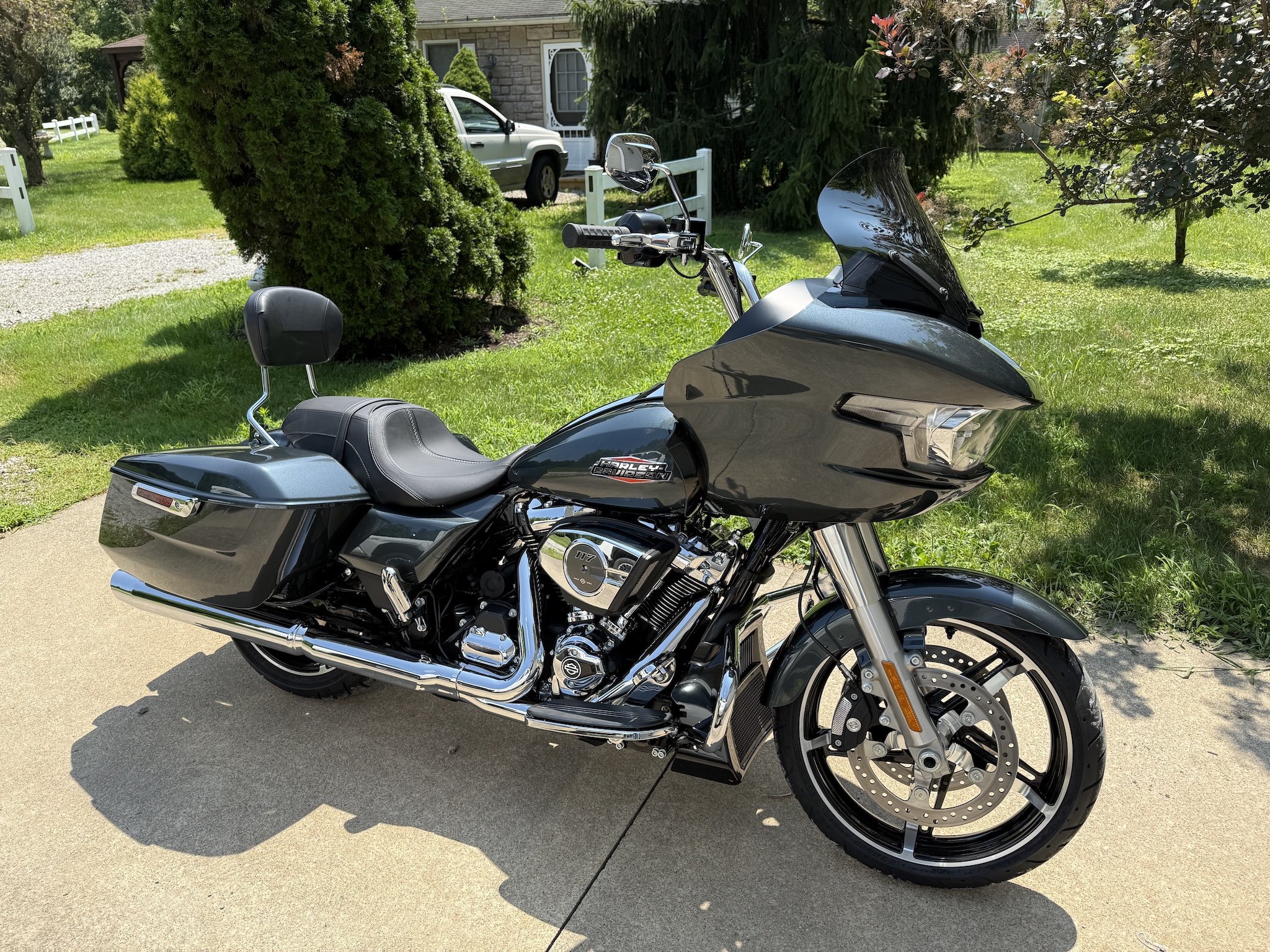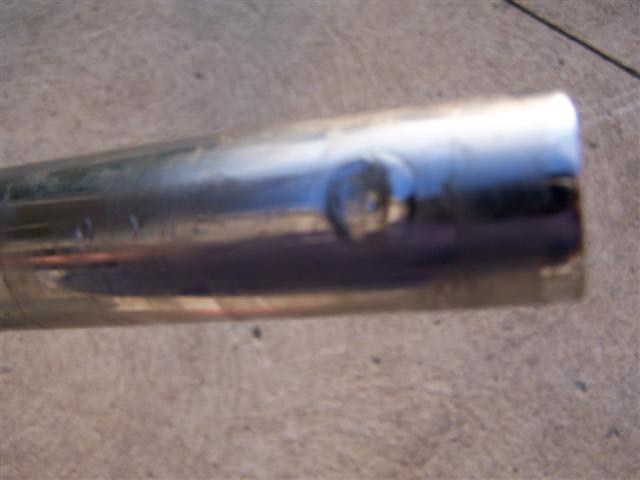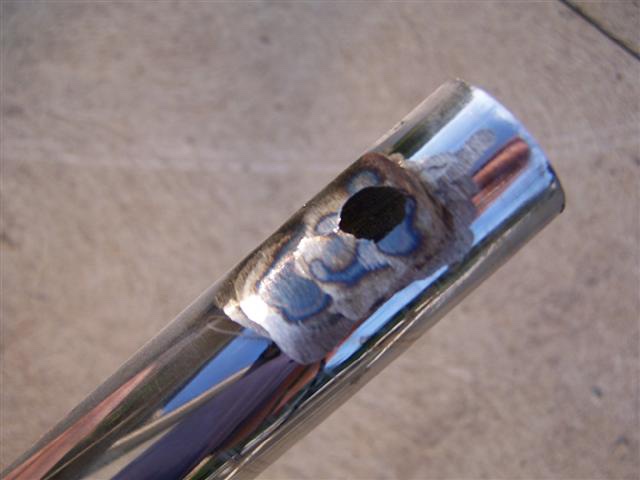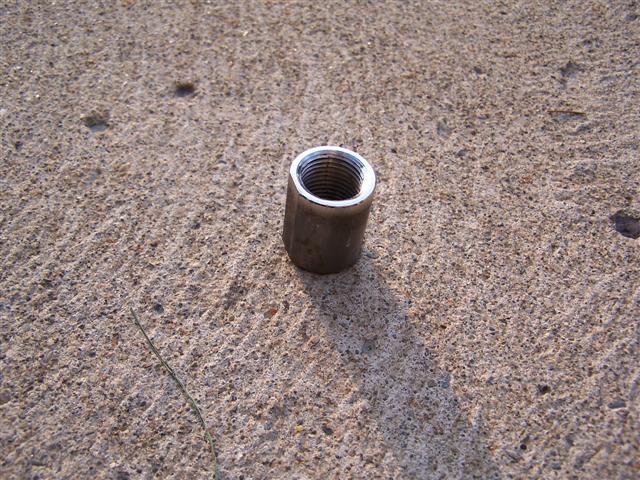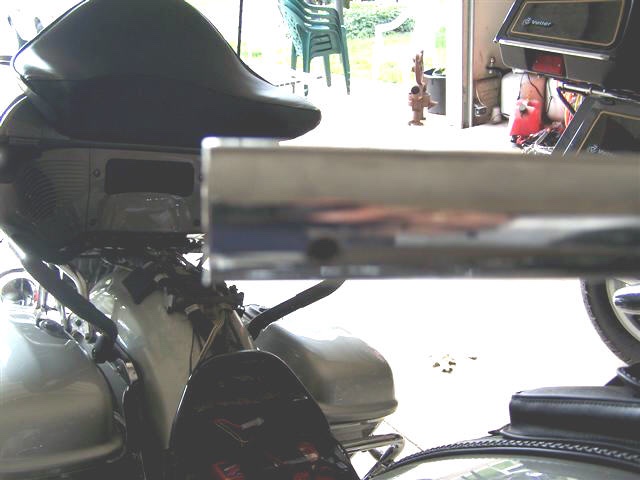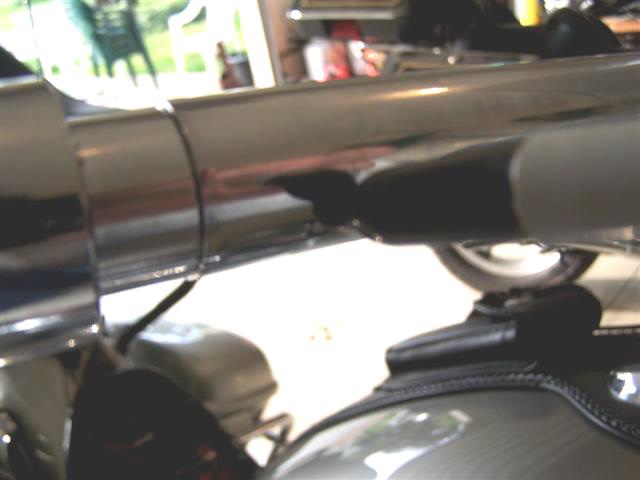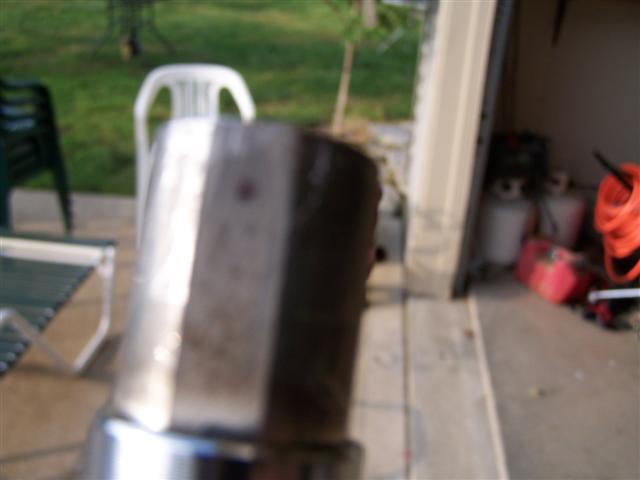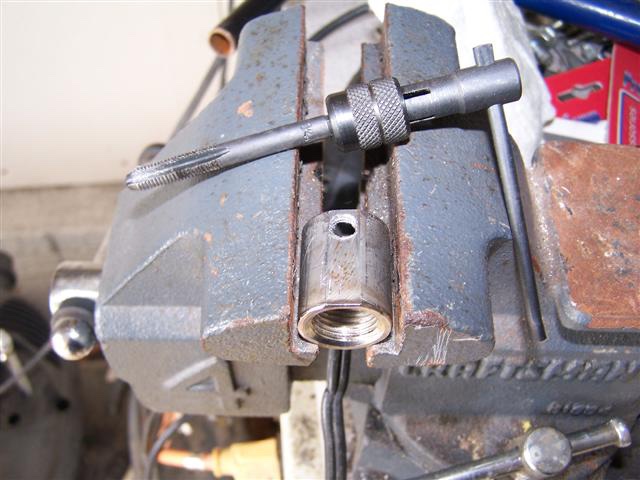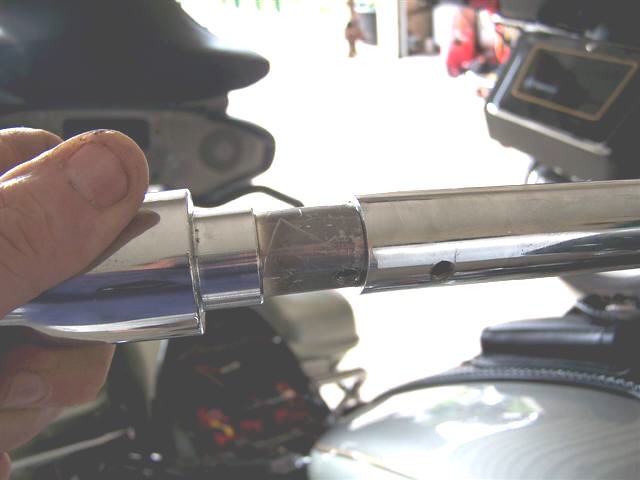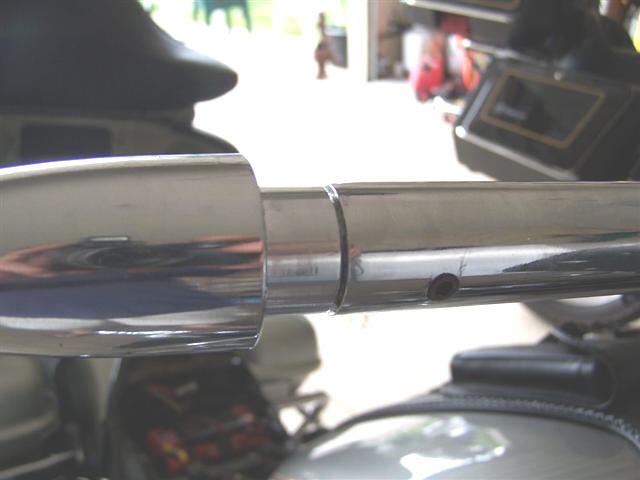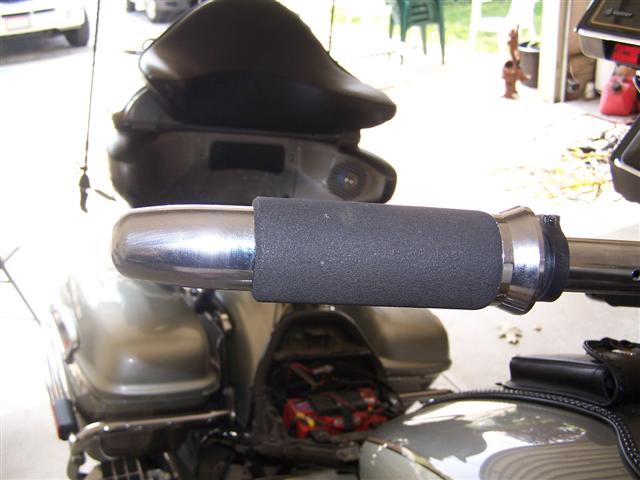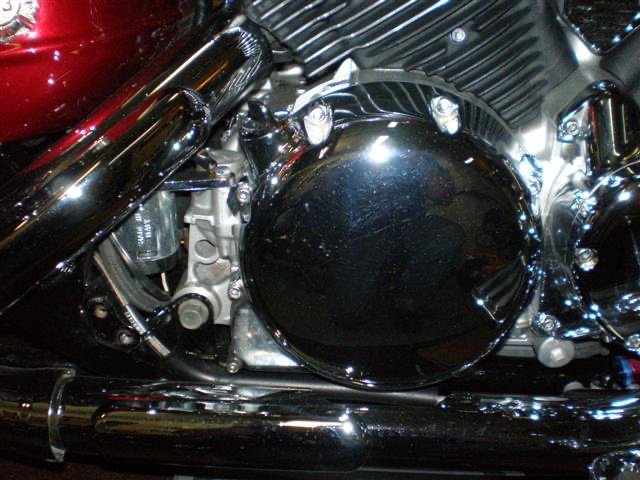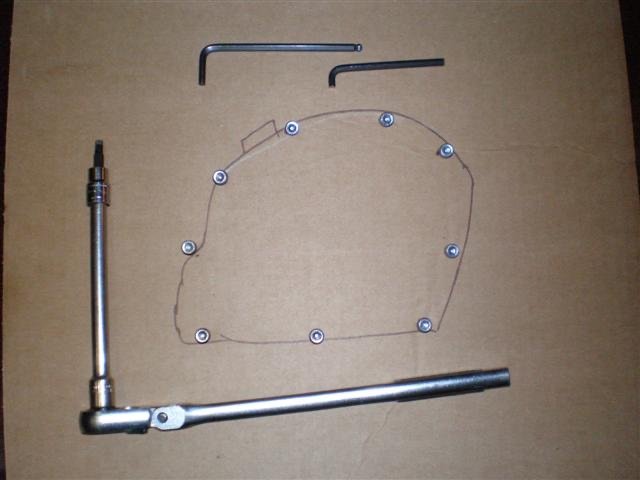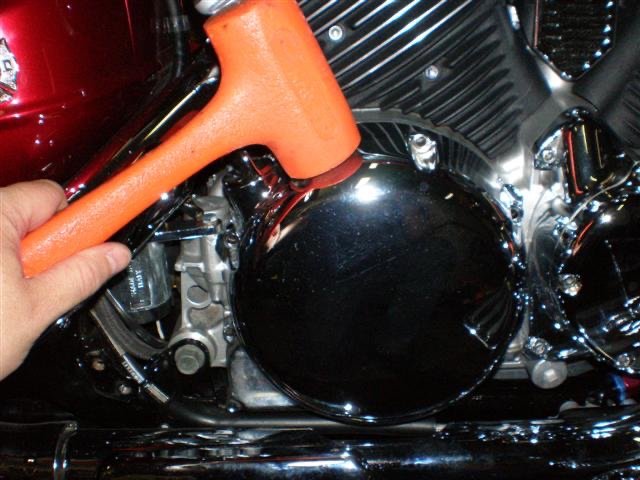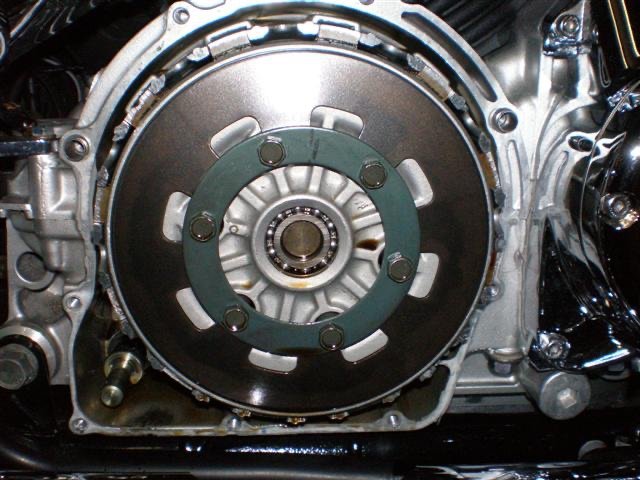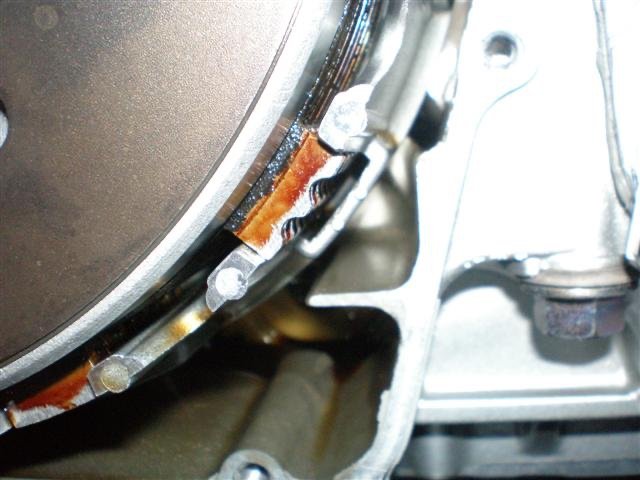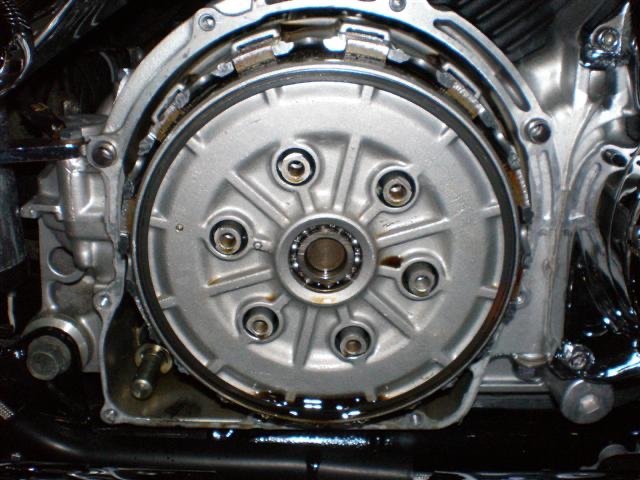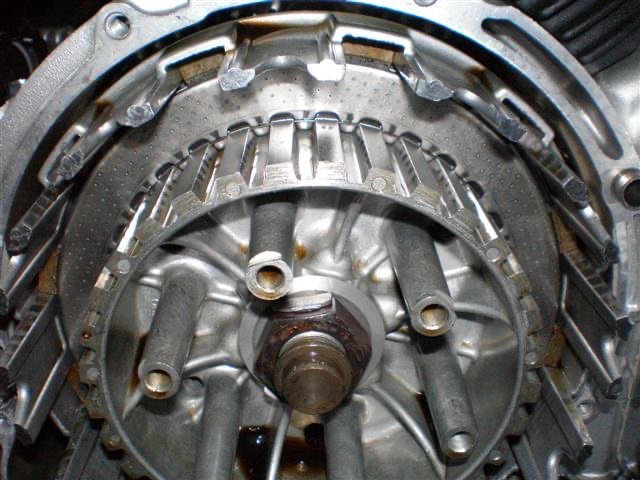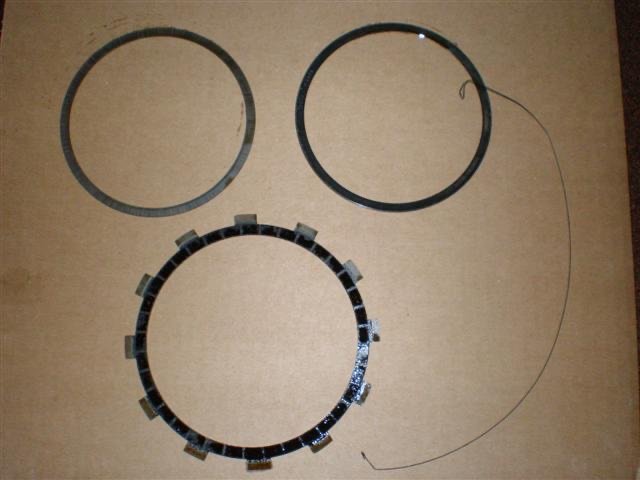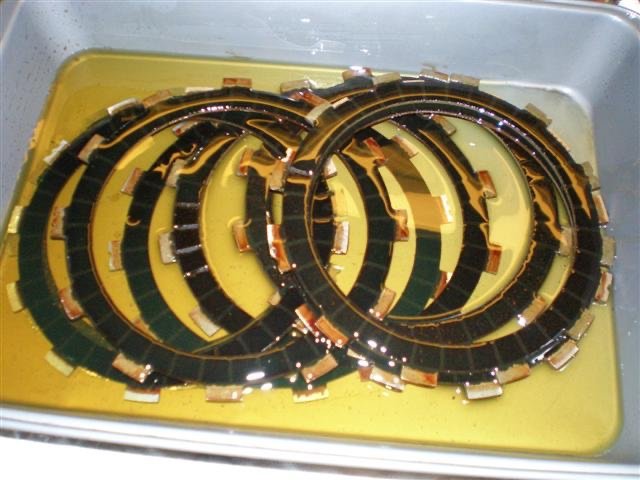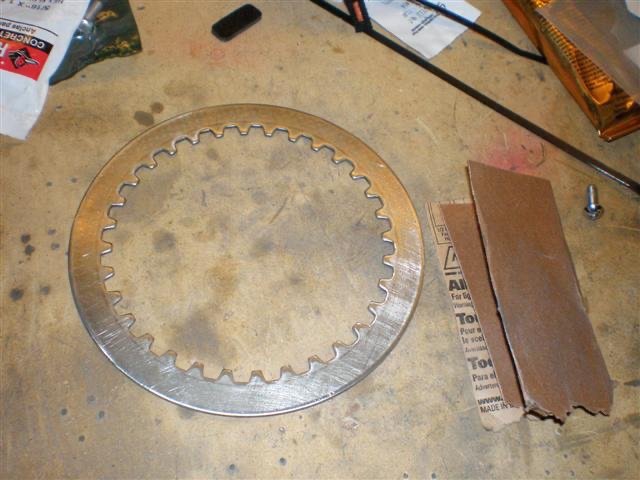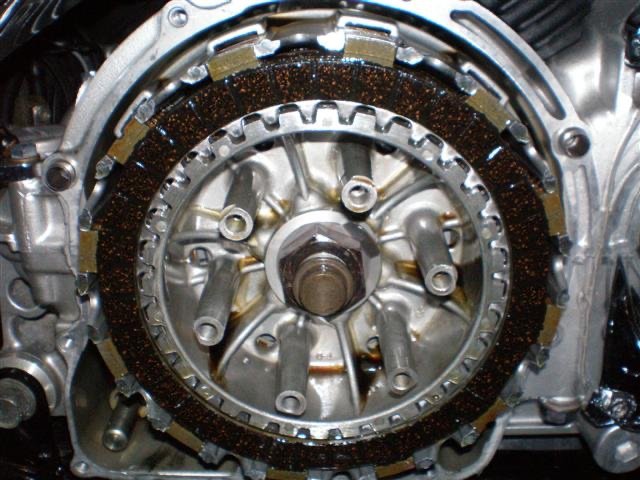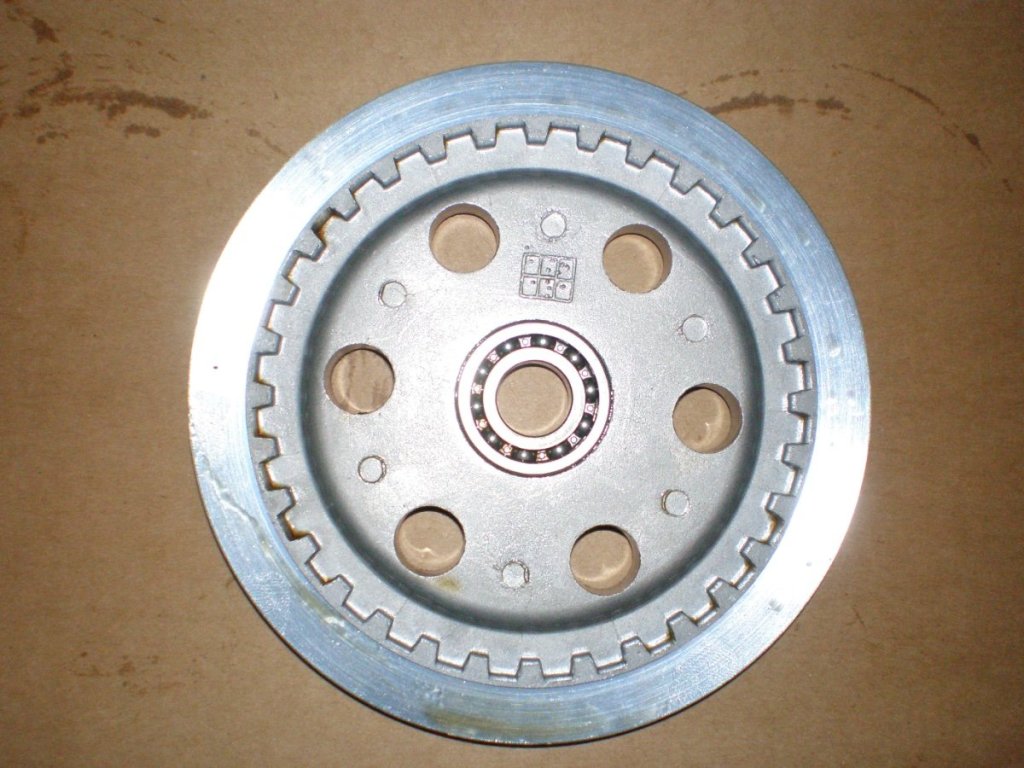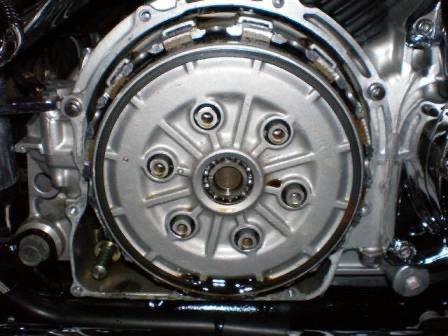-
Posts
18,113 -
Joined
-
Last visited
-
Days Won
242
Content Type
Profiles
Forums
Gallery
Events
Store
Everything posted by Freebird
-
No problem...I'm sending you a PM now.
-
Yes, really any Friday, Saturday or Sunday.
-
Free carb syncs at my house are no problem. I live outside of Cleveland though. Ride on over and we'll Git 'R Done.
-
I haven't checked to see if they offer the Michelin Commander in the first gen sizes but I sure like them.
-
Installing Stock Weights on Flanders Bars First I need to give credit to the basic idea here to Kbran. He posted a while back that he had done this when he installed his Flanders bars and it sounded like the way to go. The only difference is that he welded his and I opted for a set screw approach. The main reason being that I'm not a very good welder. This is a bit time consuming but I like the stock weights so it was worth it for me. Pretty straight forward job that most anybody should be able to do. After removing the bars, you will see the factory weld that holds the threaded sleeve in place. I simply used a bench grinder to grind the bars down in that area until the plug just fell out. Drill a hole in the Flanders bars approximated 3/4" from the end. The size hole you drill will depend upon the size set screw you use. I picked up a couple of 10/28 screws 1/4" long at the hardware store so used a drill size that I could tap for 10/28 Screw the insert onto the end of the weight and push it all the way in and then using a marker, mark the insert through the hole. Now you can see the mark where you will need to drill and tap the insert to match the hole you drilled in the bars. Drill and tap. Screw the insert back onto the weight. You will also need to tap the hole that you drilled in the Flanders bars to the same size. At this point, I slid the throttle grip on. You can't see it in this next picture but the throttle grip is already slid on so that once the weight is installed, I just slide it back to where it is supposed to be. Insert the weight with insert into the bar. Line up the holes and insert your set screw. The screw needs to be flush with the outside of the bars. Especially on the throttle side to make sure the throttle can turn freely. It will be almost flush if you use a 1/4" long screw. Just a very little dressing with a smooth flat file will get it just right. That's all there is to it. Do the other side and you are done.
-

Replacement windshield RSV
Freebird replied to Mobile's topic in Royal Star Venture Tech Talk ('99 - '13)
You will pay more for the Clearview but in my opinion, there is no better shield on the market. It will last longer and because it is not coated like most others, you can buff out a scratch if you were to get one.- 22 replies
-
- replacement
- rsv
-
(and 3 more)
Tagged with:
-
Rebuilding Pillow-Top Seat on '06 RSV Thanks to Jake (jakenator6) Hannon for this excellent tech article. http://www.venturerider.org/seat/image003.jpg http://www.venturerider.org/seat/image004.jpg After about 8000 miles, the seat on my RSV was beginning to give me some severe discomfort. I felt, since it had been comfortable earlier, the foam might be breaking down a bit. The pressure point was exactly in the back center, right where the tailbone resides. My decision was to rebuild the seat with more of a dished out saddle effect and put firmer foam in place. Attached are photos and description of what I did. Starting point was to get a photo of the seat before I started removing things. Always useful when putting things back together. First job was removing the staples. Easily accomplished with a flat bladed screwdriver and pliers. http://www.venturerider.org/seat/image007.jpg http://www.venturerider.org/seat/image008.jpg The seat cover is held onto the foam with pull-through fasteners seen above. These are easily removed with some needle nosed pliers but some care needs to be taken as they are not exactly robust. Grab one side of the metal clip, pull up to get some slack, and push it through the center hole of the plastic washer. Once the cover is off, use the needle nosed pliers to push the fastener through the foam. I think there were 9 of these. The vinyl cover is now separated from the seat. The seat pan is also pictured. http://www.venturerider.org/seat/image011.jpg http://www.venturerider.org/seat/image012.jpg The soft, white foam on top will need to be pulled off. It was glued to the denser foam but take your time and they can be separated into reusable condition. I was not planning to reuse the soft cover and was planning some surgery on the denser foam so I was not as meticulous as I could have been. http://www.venturerider.org/seat/image015.jpg http://www.venturerider.org/seat/image016.jpg I used the removed soft top as a template and cut a new pillow from much denser foam 1" thick. In hindsight, I would still use the denser foam but only 1/2" thick. The old foam was so soft it compressed easily and gave the seat it's puffy look. The new foam compressed very little and was the dickens to get the cover stretched back over. Putting those stringed fasteners back through is a job that is guaranteed to test your mettle. http://www.venturerider.org/seat/image019.jpg http://www.venturerider.org/seat/image020.jpg Based upon the recommendation from this site, I used a flap disc on a drill to start reshaping the seat. The right picture above is how things had progressed with this tool. It really did some smooth work but my plan was to remove a lot more foam so I resorted to an electric carving knife. http://www.venturerider.org/seat/image023.jpg http://www.venturerider.org/seat/image024.jpg The above photos show most of the knife work. I took the rear center of the seat down almost 3" since I planned to build it up with some really stiff 1/2" foam as a base. From the center back, I taper it up to give a smooth dished saddle shape. This was way past the point of no return. http://www.venturerider.org/seat/image027.jpg http://www.venturerider.org/seat/image028.jpg I used some 1/2" foam rubber intended for flooring in play rooms. A little puzzle work and some spray adhesive got things stuck in place. I had also carved out a niche for the backrest piece you see in the above right picture. I really wanted some more support at the back and to spread my weight to the wider parts of my posterior. http://www.venturerider.org/seat/image031.jpg http://www.venturerider.org/seat/image032.jpg Some more knife work and spray adhesive and the new pillow top was ready for recovering. http://www.venturerider.org/seat/image034.jpg Getting the cover back on will take two people, more patience than I had, and some needle nosed vice grips. The plastic seat base is hard and stapling takes even more patience. How's it work? Pretty good I must say. I've put in two 300 miles days and the pressure point in the center is gone. The built up back rest is largely negated by all that 1" foam (pillow stuff), but it is still an improvement. If you're not happy with how your seat feels, changing it is within the tool capacity of most of us. I wouldn't hesitate to try it again but right now I'm OK with what I have.
-
I don't know about that but all I can say is that I keep mine on a Battery Tender pretty much all the time and my Odyssey battery is going on 4 years now.
-

2006 rstd grips
Freebird replied to foundryratjim's topic in Royal Star and Royal Star Tour Deluxe Tech Talk
I've got some FAT foam grips on mine that are Yamaha and made for the Road Star. Don -
Sending Unit Repair Thanks to Brian H. (6m459) for this excellent article. I measured my sender unit resistance and found it to be open circuit as was suggested by another member. I removed it from the tank to find that the wiper would loose contact with the resistance wire at the mid point, of the float travel, as the resistance wire substrate is warped. It made good contact at top and bottom but not in the middle. I found that there is a handy adjustment available that lets you re-tension the wiper quite easily. Undo the screw and slide the bushing closer to the resistance wire, against a compression leaf spring, then re-tighten the screw. All seems to work well again now but I'll be keeping a close eye on it for the next little while. Shown with cover removed. Note bend in resistor wire substrate. http://www.venturerider.org/sendingunit/1%20(Small).jpg The wire loses contact with the resistor midway. http://www.venturerider.org/sendingunit/2%20(Small).jpg Solution: Loosen screw, slide wiper closer, retighten. http://www.venturerider.org/sendingunit/3%20(Small).jpg Close up view. http://www.venturerider.org/sendingunit/4%20(Small).jpg
-
- contact
- resistance
-
(and 3 more)
Tagged with:
-
RSV Instructions for Clutch Removal, Install and Upgrade. Thanks to Tartan Terror for this GREAT article. These are instructions for replacing the clutch on a Royal Star Venture. As part of the install on my bike, I also did a clutch upgrade which involved removing several parts and installing an additional full size clutch disc. I found that with this upgrade, I was able to eliminate all of the slip that I was experiencing. At the time I did this upgrade, I also installed a heavier spring available from PCW Racing that also made the clutch more firm. With these instructions you will also be able to do a clutch on your bike completely to stock also. First you need to remove the cover located on the right side of the bike. It is the round cover just in front of the horn. You will need a 5mm Allen key to remove the bolts. In my case, I used a ratchet with a 5mm Allen bit and a ball head Allen key also. To make the removal easy, I also took an old 5mm Allen key and shortened it so that I could loosen the bolts behind the exhaust without removing or loosening the exhaust. When I removed all the bolts, I drew a shape of the cover on cardboard and place the bolts in holes placed in the cardboard so that the bolts will go back in the proper holes. Next you need to gently remove the cover. I did not need to drop any of the oil out of the engine. Although it is a wet clutch, when the engine is not running there is very little oil in the clutch area. Gently tap the cover with a dead blow hammer or something that will not mark your chrome. Remove the cover and clean the old gasket off the cover and surfaces on the block of the engine. When the cover is off, make note of the marks in the clutch basket and on the clutch friction plates. On the basket you will see at one point (5 o'clock position) there are two marks in the basket. You will also see that the with the discs in that all the discs have two marks also. At the 11 o'clock position you will also see one mark in the basket and the same mark on the friction plates. These marks are very important when you reinstall the friction discs. They MUST be lined up. Next you will need to remove the small plate on the outside of the clutch. It is held on by 6 bolts and you will need to use a 10mm socket or wrench. Remove the small plate and spring. Be careful because there is a small metal ring that sits in the pressure plate in a groove under the spring. You now need to remove the pressure plate. All you need to do is lift it off. After you do this, remove all the friction discs and steel plates from the clutch basket. All the way in on the cutch, you will see where you took the plates and friction discs out, a wire. Remove this wire. You will need to break it. This holds in a steel disc like all the others, a half disc and a spring washer. You need to take all of these out. These parts are the parts that you will trash if you choose to upgrade and put in a full size disc. If not, keep all these parts and take note how they come out so that you can return them as they came out. Make sure you get everything out. There is a flat steel washer in there that you have to work at getting out. It does come out and when you get it, the inner surface will be completely flat. Below is a picture of the parts that will be discarded in place of a full sized plate. The plate you will use is the same plate and part number as the rest. Whether you are installing new friction discs or just upgrading and installing one new one with all the others, they must be soaked in oil. As the RSV is a wet clutch, the discs are meant to absorb oil to work properly. Next you will need to prepare the steel plates to be reinstalled. At the recommendation of PCW Racing, I sanded the discs lightly in a crosshatch pattern so that the clutch has better grip. You can also bead blast them lightly as well. Now you are ready to reinstall the clutch. If you decide to use the original clutch parts (the small disc, washer and plate) do so now and install a wire in the groove to replace the one removed. If you are doing the upgrade like I did, you will now install the first friction plate, being careful to line up the grooves like specified so that the two notches match up to the marks on the basket at the 5 o'clock position and one notch at the 11 o'clock position. Install all the discs and plates alternating disc, plat, disc, plate. I also made it a point to spread extra oil on the discs and plates as I installed them. When they are all in, you will have a clutch disc on the outside and all the notches will line up. Next you will put on the pressure plate. The pressure plate has a punch mark on the front - make sure it lines up correctly with the single mark next to one of the bolt towers on the clutch basket. On the back side, you will see that the plate has splines that will match up with the teethe on the inner clutch basket. If these don't fit together correctly, the spring will not sit correctly. After you have this in then place the spring on next, making sure that the small ring is sitting in the groove on the front side of the pressure plate. Now install the spring. In my case, I installed a PCW spring which is heavier than the stock spring but of the same design. The stock spring is installed the same. If you use a Barnett pressure plate, follow the instructions that came with the kit. When installing the spring retainer plate and bolts, be careful not to tighten the 6 bolts too tight. Also, you will need to make sure that the spring is centered. There are notches on the towers that the 6 bolts tighten into that the finger on the center of the spring should rest on. Tighten evenly and crisscross your torqueing pattern. The torque is 5.8 ft lbs or 70 in.lbs. Reinstall the cover being careful not to crimp the new gasket and you are done. Like I said, I did the upgrade and I love it. It is better for pulling a trailer. One thing you will notice with the upgrade is the pull on your clutch lever is harder but not by much and you will adjust to it very quickly. I also recommend the upgrade if you are driving hard or have added stuff to get more power from your bike. Now get out and ride!!!
-
No problem...wasn't really asking for nor expecting an apology..just giving you a bit of a hard time .. all in fun. But since you offered an apology, I accept it of course and that is another thing that we can put behind us. Like I said, it's not important to me how far I can get out and I do like the looks of the dual setup. So long as I can communicate with the group, that's all I'm after. I have the folding euro type mounts on mine. You tighten them with either the big wing nut or the key with the anti-theft setup. They are very tight and easy to fold but I've never been crazy about the looks of them.
-
I'm just glad you are finally admitting that the AM/FM DOES rob power from the CB. I told you that so many times that you finally got mad at me about it even after I posted to you where Firestik ALSO says that the single setup is better. That being said, I still like the looks of the dual setup better and CB are not designed for great distance anyway. As long as I can talk to and hear riders in my group...that's all I care about.
-
Really no way for the water to evaporate out of them. That being said, just go with the Odyssey....completely dry cell and you don't have to worry about it at all.
-
I agree with Rod. See this article for pictures. This was on m RSV but it's the same principal. http://www.venturerider.org/forum/showthread.php?t=511
-
Installing a Dyna 3000 module in a Royal Star Venture Thanks to Scott (Tartan Terror) for this great article. Remove seat form bike. After you do this you will need to remove the battery. Remove the cables first then remove the strap hold down. Be careful not to touch terminals together or they may spark. Also be careful to make note of where any accessory wires you have installed are routed. http://www.venturerider.org/dyna/image002.jpg http://www.venturerider.org/dyna/image004.jpg Remove the battery tray next. You will need to remove the two 12 mm bolts in front of the tray. Remove the positive and negative wires from the clips that hold them and gently lift the tray out of the way. For those of you that have other items behind the tray be careful not to pull that out and lift the tray out. With the tray out of the way you will see the module standing vertical held by two nuts against the front wall of the battery compartment. Loosen the wires so you can lift the module up and out. http://www.venturerider.org/dyna/image006.jpg http://www.venturerider.org/dyna/image008.jpg Next get your new module ready to install. The Dyna 3000 module has many settings so read the directions carefully and select the setup that suits how you intend to use it. I set mine to setting 3 and set the Rev limiter to 7250. This is done by setting the small white switches to the appropriate on and off pattern. Setting the switches will change the advance of the ignition and raise the rev limiter to a higher level. Stock is 6000 rpm but this is far below the Red Line. http://www.venturerider.org/dyna/image010.jpg After Setting the switches remove the old module by removing the three connectors and plugging them into the appropriate sockets. You can’t mix them up as they will only go one way. http://www.venturerider.org/dyna/image012.jpg Bolt the new module in the location that the old one came out of and put the battery tray back in. Once again remember to put your cables and wires back the way they came out and then install the Battery. Place the seat back on and you are ready to go. One thing I noticed is that after the new module was in I needed to adjust the idle as now it seemed to rev higher. If you need to this the knob is on the right side of the bike near the back carburetor under the tank. Now all you have to do is Ride it like you stole it.
-
Yes, just remove the plastic cover/shield on the inside and lube it well. WD40 is not a good lubricant for this and will not last long. I used a white lithium grease in a small tube from an auto parts store and it has done well. I think it's been about 6 years since I had to do that.
-

Trailer wiring
Freebird replied to kkontor's topic in Royal Star and Royal Star Tour Deluxe Tech Talk
OK...I was just doing some searching and found that the Electrical Connection does offer this type kit for the Gold Wing. I sent them an email asking what it would take for them to offer one for the RSV and RSTD. Should be very easy...just a matter of using different connectors. -

bike to bike radios
Freebird replied to geresti's topic in Royal Star and Royal Star Tour Deluxe Tech Talk
If you are looking for a CB...which makes the most sense since many of us that ride RSVs, Wings, etc. already have CB...then this is the nicest one in my opinion. Not cheap but sure does integrate nicely. http://www.sierra-mc.com/products.asp?cat=243 -
No problem...glad it turned out to be something simple. You are NOT the first to have that happen.
-
I don't want to state the obvious but first make sure the volume knob on the rear didn't get turned down. I'm sure you checked it because you are likely smarter than I am but I messed with mine for a while one day after Eileen rubbed against it when getting on the bike and turned it down.
-

Trailer wiring
Freebird replied to kkontor's topic in Royal Star and Royal Star Tour Deluxe Tech Talk
No...I have never heard of anything like that for motorcycles. Seems like it would be easy for somebody to come out with. There IS a connector right under the seat where it could be plugged in. Heck...I should buy a bunch of Modulites and do that myself. -
These are all good suggestions. To me, probably the single most important thing about riding is FOCUS. Do not get distracted by the pretty lady walking down the street, the cool car parked on the side of the road, etc. You MUST be observant about what is going on and what MIGHT happen in front of or behind you. Basic defensive driving. I also want to point out another thing that some of you may not agree with. I know that we have some truckers here and to be honest, I sometimes think that they get the raw deal when it comes to placing blame. Most of you know that I'm on the road almost all the time and I can tell you that while there are a few bad truckers out there, there are far more very bad drivers of family sedans, pickups, etc. Those trucks do not stop on a dime and they take a lot of room sometimes to turn and perform other simple tasks. As I watch some of the idiot drivers that are running around in their sedans, coupes, etc., I can only imagine the challenge that some of them cause the truck drivers. When you hear about a bike or even a car accident where a truck turned in front of the rider or driver and there was a wreck, you can't always assume that it was the truckers fault. On our busy streets in some cities, if a truck waited until there was absolutely nobody coming from the other direction, we would have traffic jams that would grind our cities to a halt. The trucks simply can't make the turns where there are no lights quickly enough that oncoming traffic does not have to sometimes stop and wait for a few seconds or a minute. They have to wait until they do not cut somebody so close that they CAN'T slow down or stop and that's just the way it is. I say this from personal experience. About 12-14 years ago, I was living in San Diego. I was driving down the road one day when a Semi coming from the other direction turned in front of me. Luckily, I was driving a car and not a motorcycle at the time and locked up my brakes but couldn't stop in time. I ended up turning just enough to crash into the rear tires of the truck instead of going under the trailer. It didn't quiet total my car but came very close. Due to the fact that I had my seat belt on and my airbag deployed, I manage to walk away from it with no injuries. A couple of days later I got the accident report and was shocked that they found me to be at fault. I was very angry at the time and thought how in the world can I be at fault when he turned in front of me. The fact is though, after I cooled down and got over my denial, I knew that it was the right conclusion. I should NOT have been driving that day. I was having a personal problem and my mind was NOT on the road. I was looking away down another street and can't honestly say how long it had been since I had looked at where I was actually going. Had I been paying attention, I would have seen the truck making the turn and would easily have had time to slow down and even come to a normal stop had I needed to. They were able to tell by my skid marks and by how far back I had hit the truck and how far he was already through the turn that I had reacted much later than I should have. It was a just call on the part of the investigator. As I look back on it now, I am glad that some innocent trucker wasn't cited and his driving record negatively affected by my own failure to be observant. Had I been on a motorcycle that day, I would most likely not be writing this story. So...all I'm really saying is that riding a motorcycle requires complete focus and observance of what is going on all around you. You must anticipate what MIGHT happen at any time. The motorcycle safety course teaches much of this and I hope that everybody here who hasn't taken the basic course and the advance course does so as soon as possible. Sorry this was so long, but this is an important topic.
-
Another that I remembered...and may be the one you were thinking of....is Tom Anderson. He was a VERY close friend of Eileen and I. We became friends through the MTA and he was a member here only for a short time before he cancer took him from us. I have added him also.

